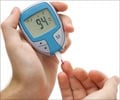FAQs
1. Which doctor should I visit for gestational diabetes?
You should initially consult with your obstetrician (OB-GYN) for gestational diabetes management. Depending on your specific needs, they may also refer you to other specialists such as an endocrinologist for further guidance and treatment.
2. Why is testing blood sugar important in pregnancy?
Without specific testing, gestational diabetes can often go undetected until complications arise. The symptoms and signs of diabetes may be subtle such as excessive thirst, increased urination , and unusual tiredness. Monitoring helps manage blood sugar levels, reducing the risk of these complications and ensuring a safe pregnancy and delivery. It also lowers the long-term risk of type 2 diabetes for the mother (4✔).
3. Will I require insulin jabs to control my sugar?
Yes, in some cases, insulin injections may be required to control blood sugar levels if diet and lifestyle changes are not enough. This helps prevent complications for both the mother and baby, ensuring a healthier pregnancy (1✔).
4. What percentage of women with gestational diabetes will have diabetes after the pregnancy?
The blood sugar levels will return to normal after delivery. Approximately 50% of women who have developed gestational diabetes will develop type 2 diabetes within 5-10 years after pregnancy. Regular monitoring and a healthy lifestyle can reduce the risk.
Risk factors for progression from gestational diabetes to postpartum type 2 diabetes: a review (6✔)
5. Does ethnicity play a role?
Yes, Ethnicity plays a major role in gestational diabetes. This could be due to a variety of factors, including genetic predisposition, lifestyle factors, and socioeconomic factors. Women of the following ethnic groups have higher chances of having gestational diabetes:
- African Americans
- Hispanic or Latino Americans
- American Indians
- South Asian(7✔)
6. What are the symptoms of gestational diabetes?
Gestational diabetes often manifests without noticeable symptoms, highlighting the importance of testing for early detection and management. However, when symptoms do appear, they can include increased thirst, frequent urination, dry mouth, fatigue, blurred vision, or genital itching or thrush (8✔).
7. Can exercise help control gestational diabetes?
Yes, regular exercise helps your body use insulin more effectively, keeping blood sugar levels in check. Regular physical activity such as swimming, walking or prenatal yoga can lower blood sugar levels improving overall health and reducing the risk of complications during pregnancy. Always consult with a healthcare provider before starting an exercise routine to ensure it's safe for both you and your baby (9✔).
8. Can I still eat sweets if I have gestational diabetes?
Yes, you can still enjoy sweets in moderation if you have gestational diabetes, but it's important to be mindful of portion sizes and how they affect your blood sugar. Opt for sugar-free or low-glycemic alternatives when possible, and try to pair sweets with a source of protein or healthy fat to help balance blood sugar levels (10✔).
9. Is breastfeeding safe with gestational diabetes?
Yes, breastfeeding is safe and highly beneficial for both mother and baby, even if the mother had gestational diabetes. Breastfeeding helps regulate the baby's blood sugar levels, reduces the risk of obesity and diabetes later in life, and promotes bonding.
For the mother, breastfeeding can assist in regulating blood sugar and may help in losing pregnancy weight. However, mothers with gestational diabetes need to continue monitoring their blood sugar levels while breastfeeding, as breastfeeding can influence insulin needs. Always consult with a healthcare provider for personalized advice (11✔).

 Email
Email























I had my Glucose test done today 100 grams Fasting : 81 1 hour: 172 2 hour: 127 3 hour : waiting on my last result Is this is high ?